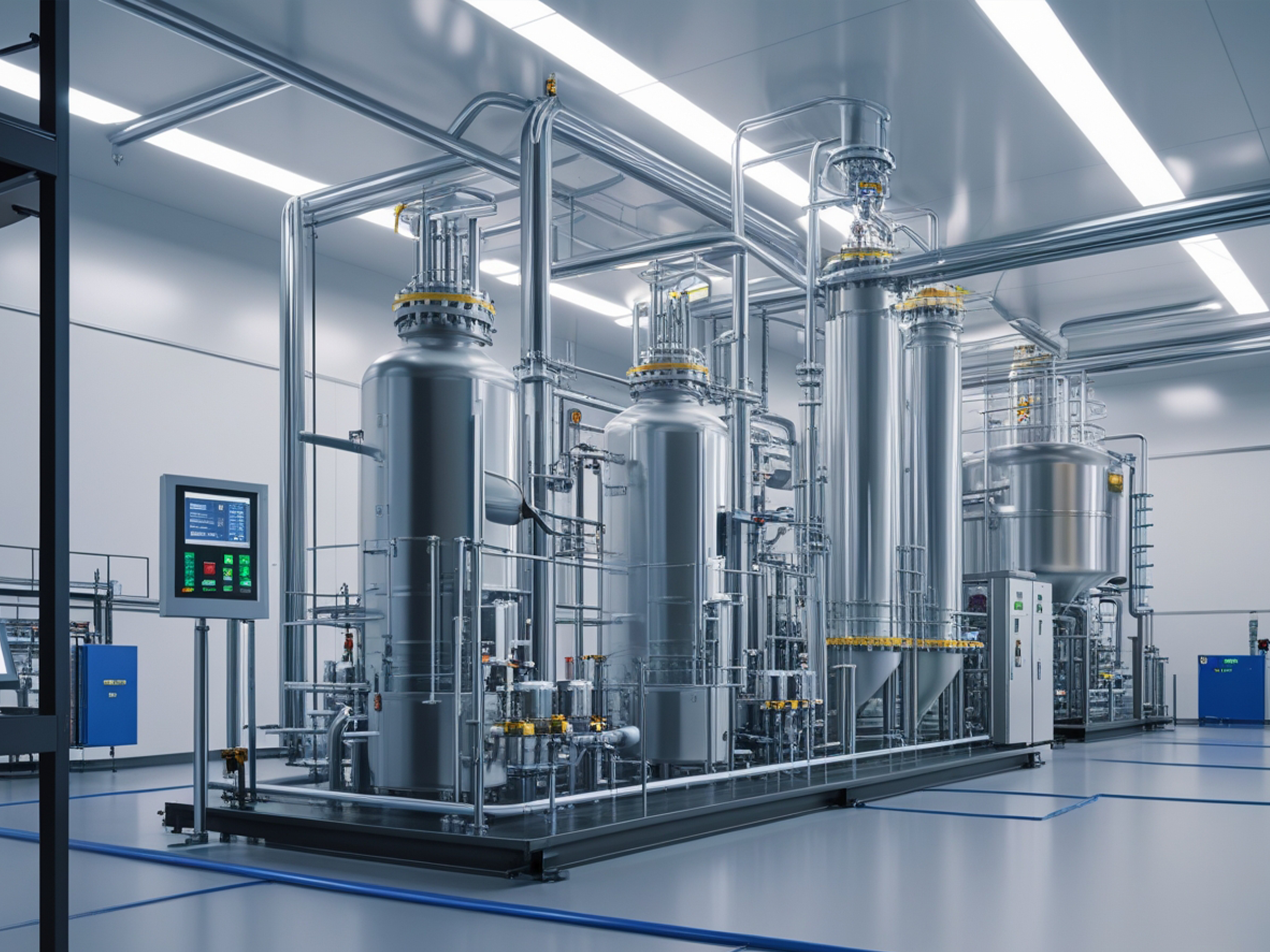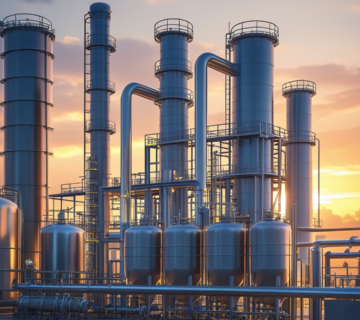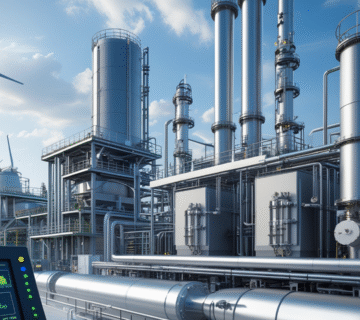Introduction
Ammonia production, a cornerstone of modern agriculture, depends heavily on the Haber-Bosch process. Since its development over a century ago, this method has enabled the large-scale synthesis of ammonia, providing the essential nitrogen source needed for producing urea and other nitrogen-based fertilizers. However, the Haber-Bosch process is also one of the most energy-intensive industrial operations, accounting for nearly 2% of global energy consumption and generating significant greenhouse gas emissions. As global demand for urea continues to grow, the need to improve ammonia production’s efficiency is becoming more urgent.
One of the most promising strategies for achieving this efficiency is the development of innovative catalysts. Traditional iron-based catalysts used in the Haber-Bosch process require extremely high temperatures and pressures to activate nitrogen and convert it into ammonia. These extreme conditions drive up energy costs and increase the carbon footprint of ammonia production. Modern catalyst research, however, offers new materials and approaches that can dramatically lower the reaction’s energy demands.
From advanced perovskites and single-atom catalysts to biomimetic materials inspired by nature’s nitrogenase enzymes, these breakthroughs are opening the door to ammonia production at lower temperatures and pressures. By cutting energy use and reducing emissions, these innovative catalysts are not only improving the economic viability of ammonia production but also paving the way for a more sustainable future.
Learn more about ammonia production and urea synthesis
💡 1. The Energy Challenge 💡
Ammonia production via the Haber-Bosch process remains a cornerstone of modern agriculture and industry. However, it is also one of the most energy-intensive processes in the world. The reaction that converts atmospheric nitrogen (N₂) into ammonia (NH₃) requires breaking one of the strongest chemical bonds known—between two nitrogen atoms. This task is accomplished by subjecting nitrogen and hydrogen to extreme conditions: temperatures of 400–500°C and pressures exceeding 150–200 bar. These conditions are maintained throughout large-scale industrial operations, consuming vast amounts of energy and making the Haber-Bosch process a major contributor to global greenhouse gas emissions.
The energy challenge begins with the need to produce hydrogen. While hydrogen can be obtained from water via electrolysis, the majority of industrial hydrogen is derived from natural gas through steam methane reforming (SMR). This method is not only energy-intensive but also releases significant quantities of carbon dioxide (CO₂) as a byproduct. Once hydrogen is produced, it must be compressed, combined with nitrogen, and exposed to high heat and pressure—further increasing energy consumption and the overall carbon footprint.
Why is this energy demand so significant?
The extreme operating conditions stem from nitrogen’s molecular stability. Without a highly active catalyst, breaking the triple bond in N₂ and forming NH₃ molecules requires enormous amounts of energy. The traditional iron-based catalyst used in the Haber-Bosch process is effective, but it still necessitates high temperatures and pressures to reach acceptable conversion rates.
As a result, the Haber-Bosch process accounts for nearly 2% of global energy use and a sizable share of industrial CO₂ emissions. This high energy demand not only impacts the cost of ammonia production but also poses significant environmental challenges. For urea producers, who rely on ammonia as a key feedstock, addressing this energy intensity is critical to improving sustainability and reducing greenhouse gas emissions.
⚙️ 2. Next-Gen Catalysts Leading the Way ⚙️
The emergence of next-generation catalysts marks a significant breakthrough in ammonia production, offering the potential to reduce energy consumption and greenhouse gas emissions while maintaining or improving production rates. Traditional iron-based catalysts have long been a workhorse for the Haber-Bosch process, but they come with a key limitation: they require extremely high temperatures (400–500°C) and pressures (150–200 bar) to break the nitrogen molecule’s triple bond and facilitate ammonia synthesis. The search for more efficient catalytic materials has led researchers to explore alternatives that can achieve the same—or better—results under milder conditions. These advancements are not only about cutting costs, but also about paving the way for more sustainable and energy-efficient fertilizer production.
1. Perovskite Catalysts
Perovskites, known for their unique crystal structures, have emerged as a promising class of materials in catalysis. Their highly tunable properties allow them to activate nitrogen molecules at lower temperatures, reducing the need for extreme heating. Perovskites also demonstrate excellent stability and resistance to sintering, making them ideal for long-term industrial use. By enabling more efficient nitrogen activation, these catalysts hold the potential to significantly lower both energy costs and carbon emissions.2. Transition Metal Nitrides and Carbides
Another promising group of catalysts includes transition metal nitrides (such as molybdenum nitride) and carbides (like tungsten carbide). These materials exhibit high catalytic activity and stability under harsh conditions, while allowing the reaction to proceed at lower pressures compared to traditional iron catalysts. Their durability and resistance to deactivation ensure longer lifespans, reducing maintenance costs and downtime. Furthermore, they offer a path to improving ammonia production efficiency without requiring drastic changes to existing industrial infrastructure.3. Single-Atom Catalysts (SACs)
Single-atom catalysts represent a cutting-edge development in the field. By isolating individual active metal atoms on a support material, SACs maximize the utilization of precious metals such as ruthenium. This approach not only reduces the amount of catalyst material needed, but also provides exceptional catalytic efficiency. Single-atom catalysts have shown the potential to lower the activation energy for nitrogen reduction, enabling ammonia synthesis at significantly lower temperatures and pressures. Their high activity and selectivity make them a compelling choice for future ammonia production facilities.4. Biomimetic Catalysts
Inspired by nature’s nitrogenase enzymes, biomimetic catalysts aim to replicate the efficiency of biological nitrogen fixation. These catalysts take cues from how certain bacteria convert atmospheric nitrogen into ammonia under ambient conditions. By mimicking these natural processes, researchers hope to develop catalysts that require far less energy input than traditional methods. While still in experimental stages, biomimetic catalysts hold the promise of achieving ammonia synthesis at room temperature and atmospheric pressure—a revolutionary shift in how ammonia is produced.
🚀 3. Boosting Efficiency, Cutting Costs 🚀
As global agriculture faces increasing demand for nitrogen-based fertilizers, the need to improve ammonia production efficiency and reduce associated costs has become more pressing than ever. Innovative catalysts and advanced production technologies offer viable solutions for achieving this balance. By improving reaction conditions, enhancing catalyst performance, and optimizing energy usage, producers can lower operational expenses while maintaining high ammonia yields—ultimately making urea production more cost-effective and environmentally sustainable.
1. Lower Operating Temperatures and Pressures
One of the most significant ways to cut costs is by reducing the extreme conditions required for the Haber-Bosch process. Traditional ammonia synthesis relies on high temperatures (400–500°C) and pressures (150–200 bar), which demand enormous energy input. Advanced catalysts, such as perovskites, single-atom catalysts, and transition metal carbides, can lower these temperature and pressure requirements. With more efficient catalytic materials, less energy is needed to sustain the reaction, translating into lower fuel costs and reduced energy bills.
2. Improved Catalyst Longevity
Another factor in reducing costs is extending the lifespan of catalytic materials. New-generation catalysts are designed to resist sintering, maintain activity over time, and perform under milder conditions. Longer-lasting catalysts reduce the frequency of replacements, maintenance downtime, and associated labor costs. This not only improves the cost efficiency of production but also increases plant availability and throughput.
3. Energy Recovery and Integration
Many facilities are exploring ways to recover and reuse waste heat generated during ammonia synthesis. By integrating energy-efficient equipment and heat recovery systems, plants can recapture energy that would otherwise be lost. This recovered energy can then be used to power other parts of the process or offset energy demands, further reducing overall costs.
See how catalysts boost efficiency and lower costs
🎉 Conclusion 🎉
As innovative catalysts transform ammonia production, the entire fertilizer industry stands to benefit from lower energy costs, reduced environmental impacts, and enhanced production efficiency. The Haber-Bosch process, which has long been central to feeding the world’s growing population, now faces a pivotal opportunity to modernize. By adopting cutting-edge catalytic materials and more efficient reaction pathways, ammonia and urea producers can maintain their crucial role in global agriculture while significantly reducing their carbon footprint.
These new catalytic technologies—ranging from perovskites and single-atom catalysts to biomimetic approaches—offer a clear path toward greater sustainability. They not only cut down the energy requirements for ammonia synthesis but also help stabilize production costs in an era where energy prices and environmental regulations are becoming increasingly stringent. For urea manufacturers, whose operations are closely tied to ammonia production, these advancements present a direct avenue to improve profitability, maintain competitiveness, and meet global sustainability goals.
As the industry evolves, continued investment in research, adoption of new technologies, and collaboration across sectors will ensure that ammonia production becomes cleaner, greener, and more efficient. By embracing these innovations, producers can secure their position as leaders in sustainable nitrogen fertilizer production, helping to feed the world while protecting the environment for generations to come.






